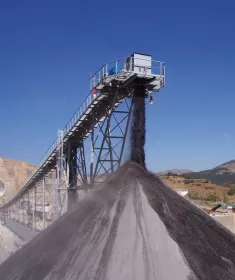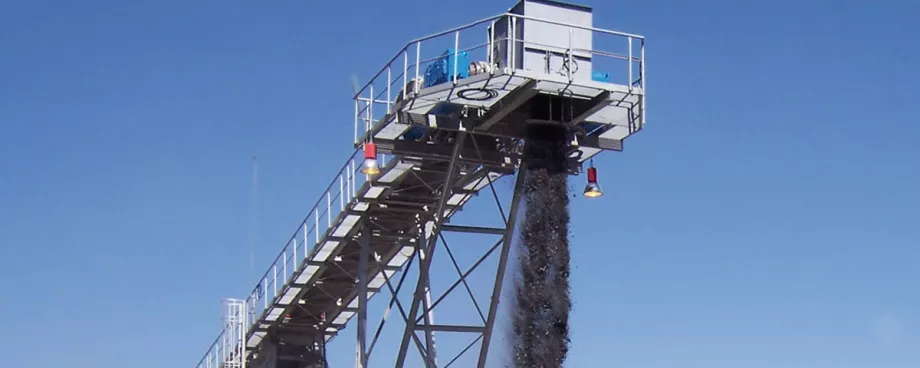
Belt conveyor systems for underground mining, tunnelling and construction works are characterised by their high flexibility regarding routing and conveying distance as well as easy and fast installation and dismantling. Especially for tunnelling projects, which are temporary by nature, quick installation, removal, and none the less, reusability is of high importance. Certainly, one of the most appropriate approach to reach these goals is a modular system design.
A cooperation partner of the Herrenknecht Group, a leading manufacturer of tunnel boring machines, H+E Logistik GmbH, headquartered in Bochum, Germany, has gathered a wealth of experience in the design, construction and operation of belt conveyor systems for tunnelling and mining projects worldwide. Tunnelling projects that used belt conveyor systems by H+E Logistik include, for example, a high speed railway tunnel in Guadarrama, Spain, which used two conveyor systems with a length of 14 km, each, and a water tunnel project in Veligonda, India, for which the company delivered a conveyor system of 17 km length.
A Modular System
Based on their extensive experience in mining and tunnelling, H+E Logistik has developed a modular conveyor belt system for general bulk materials handling applications which offers flexible, individual and efficient solutions. In addition, the company also founded the division “industrial” to cover the bulk materials handling area and which is in charge for all aspects related to the product.
As stated above, the key feature of the new system is its modular concept. It enables the three components of the conveying system – the drive, bridge and reverse modules – not only to be combined with each other but also to be expanded to conform precisely to the requirements of the situation. This guarantees fast planning and smooth installation of the system.

According to H+E, the system is also be suitable for use in areas where space is limited and contributes to the efficiency of separation and processing systems as well as gravel and cement works by conveying large quantities of up to 2000 t/h. With different motor power ratings and belt widths, H+E can put together the optimum system for any situation. In addition, the company also builds special systems for every distance and conveying capacity. With the aim of achieving optimal flexibility, H+E has also devised the telescopic pillars that support the belt system. They come in seven standard heights and can be optimally adjusted to suit local conditions.
Multiple Combinations
The geared motors on the drive module can be fitted on the drive pulley in pairs in order to create different output classes (15, 30, 44 and 60 kW). Further components include a housing for the conveyor head with hinged impact plate and primary and secondary scrapers.
For the bridge modules, belt widths of between 650 and 1200 mm are available along with lengths of one, two and six metres. The modules are secured to each other using simple screw connections. The number and length of the modules determine the ultimate overall length of the conveyor belt system.
Each bridge module supports the roller brackets and can be supplied with a gangway on one side, both sides, or without a gangway. For belts on a steeper gradient, H+E has incorporated a slip-resistant design into the modules. A particularly high number of robust carrying rollers provide a great deal of stability for the material at the loading point. The reverse module should also be able to cope with the highest demands. Besides a return pulley and tensioning device, it also features a plough scraper which prevents the transported goods ending up between the belt and return pulley.
Fully Equipped Solutions
Adjustable belt misalignment switches in the return and drive area stop the system if the belt is running dangerously or is causing problems by running eccentrically. Speed monitors, emergency stop switches and start-up warnings complete the range of safety features. On request, the system can be networked using a Profibus and operated via a programmable logic controller (PLC).
■




















